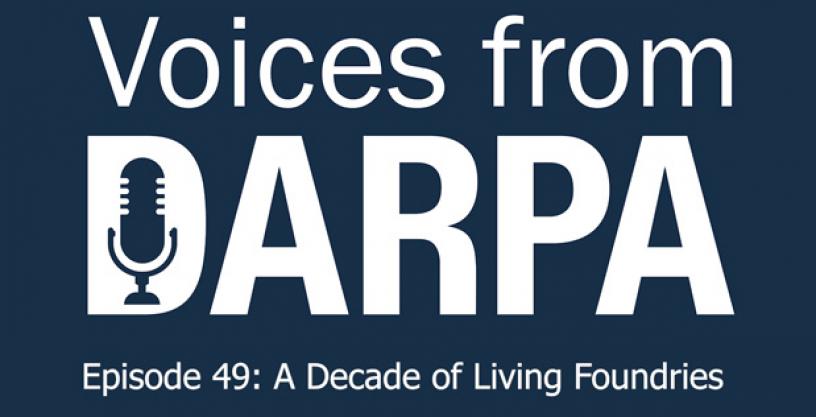
Sep 15, 2021
This episode of the Voices from DARPA podcast takes listeners on a tour of an audacious, decade-long project to merge biology and engineering into one of the most powerful engines of molecular invention the world has known. Although plenty of work remains to be done, the program, Living Foundries, is winding down. But not before its community of research performers and collaborators already has delivered a new and versatile biotechnology platform whose consequences have begun to ripple out. New companies. Follow-on investments. Chemical- and materials-based technologies for the Department of Defense … and perhaps one day for the public at large.
As it has unfolded, the Living Foundries program has created an innovation ecosystem of industry, academic, and government researchers and champions. In the podcast, you will hear a story about how they have developed, proven, deployed, and continue to hone a versatile biosynthetic technology platform capable of producing both low-cost, bulk materials such as fire-resistant coatings and polymers as well as high-cost, low-quantity specialty items such as high-energy-density jet and missile fuels.
The crux of the technology is the new ability to quickly reprogram the genomes of yeast and other microbes with in-cell biosynthetic pathways that can ferment a diversity of precursor chemicals into an inventory of more-useful target molecules. Think of this as the way brewers use yeast to convert sugar into alcohol, but now you can replace the sugar and alcohol with a wide range of starting and ending chemicals. In recent years of the program, researchers have produced, among other useful materials, antibiotics, drug-precursors, pesticides, adhesives, fuels, filtering materials, mold inhibitors, detergents, catalysts for chemical reactions, and optical materials such as liquid crystals. The molecule count that the platform has produced so far has topped 1600.
The Living Foundries program will keep on giving, says Anne Cheever, the program manager in DARPA’s Biological Technologies Office who is taking the program to the finish line. Says Cheever, “Post Living Foundries, the breadth and throughput of products will only continue to expand, especially since commercial applications of this technology span across the biotech sector. And for the DoD, this will include continuing the development path. There’s going to be solutions. There’s going to be new enhancements to military needs as well as capabilities.”
- Blubrry (podcast host): https://blubrry.com/voices_from_darpa/80842867/episode-49-a-decade-of-living-foundries/
- YouTube: https://youtu.be/5FaweJeWx1Q
- iTunes: https://itunes.apple.com/us/podcast/voices-from-darpa/id1163190520
# # #
Media with inquiries should contact DARPA Public Affairs at outreach@darpa.mil
Associated images posted on www.darpa.mil and video posted at www.youtube.com/darpatv may be reused according to the terms of the DARPA User Agreement.
Tweet @darpa
